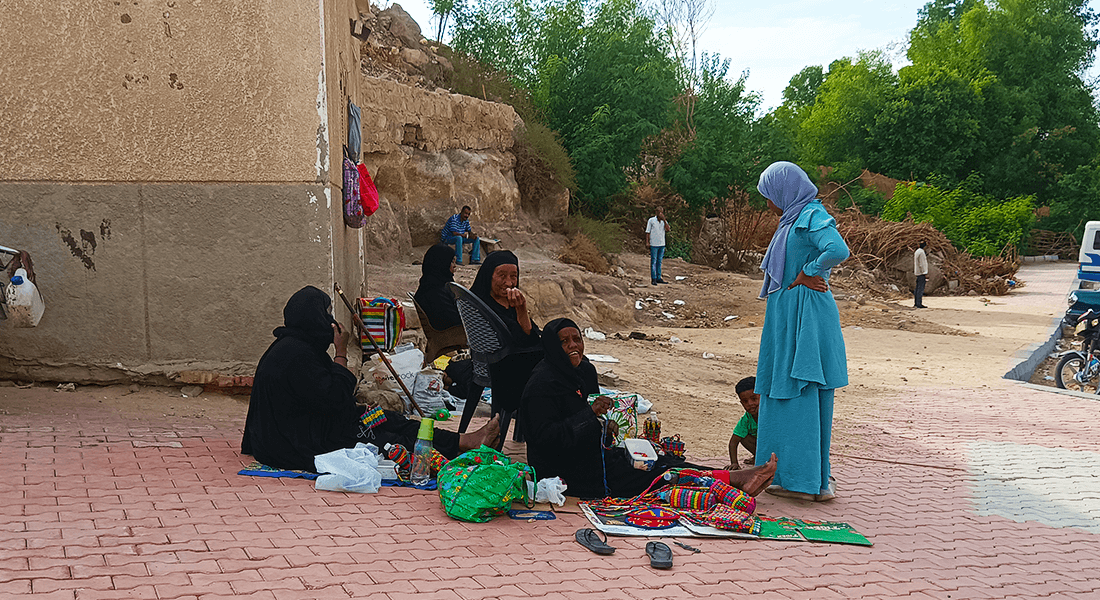Nubian Women in Aswan

In November 2023, I stayed in Aswan to document archaeological textiles from Gebel Adda kept at the Nubia Museum. I was working there with two colleagues from the University of Warsaw. Every day, on our way to the museum, we were greeted by a group of Nubian women who sold numerous handmade objects to the visitors. The Nubian women were all dressed in black gowns and tobes.
Their dress differed strongly from the multicultural population circulating on the corniche: tourists from around the world in shorts and t-shirts, Nubian captains in their immaculate white gallabiyahs and turbans, Egyptian young women with their colorful head coverings matching their jeans and shirts, and women from the Coptic community also dressed in an Occidental fashion, but their heads uncovered.
Not only the Nubian women wear a distinctive black dress, which allows to identify them immediately as members of the Nubian community, they also speak Nubian. Because we stayed in Aswan almost two weeks, we chose to rent a small house in the vicinity of the Nubia Museum, which was cheaper than staying in a hotel. As we discovered, this area was in fact a Nubian village which became a district of the modern town of Aswan. I had the opportunity to hear my women neighbors chatting in the evening, sitting in benches in front of their houses. This language has a very different musicality and tonality than Arabic. It is not similar to any other language I know. Of course, Nubian men do also speak Nubian, but they are working in the touristic places and speak mostly Arabic and English. But the Nubian women which stay at home or sell crochet works in front of the Nubia Museum, keep speaking Nubian among them. Our host explained us that this is the Kenzi Nubian language, which differs from the Dongolawi Nubian which is still spoken in present-day Sudan. The Kenzi Nubian was spoken mostly by the inhabitant of Lower Nubia, which have been forced to move when the Aswan Dam was built. An important part of the Kenzi Nubian community re-settled then in the Aswan area.
The Nubia Museum has a whole gallery dedicated to the Nubian culture, displaying Nubian architecture, vessels, jewelry and of course dress, in the moment of the re-settlement. For me, it was very interesting to note that the Nubian women keep a distinctive black dress until today, as a strong visual marker of their Nubian identity, while this is not so obvious in Sudan, where women wear tobes in various colors. Clearly, women are the pillars of the Kenzi Nubian community settled in Aswan, keeping also their language alive in their homes, transmitting it to the next generations.
